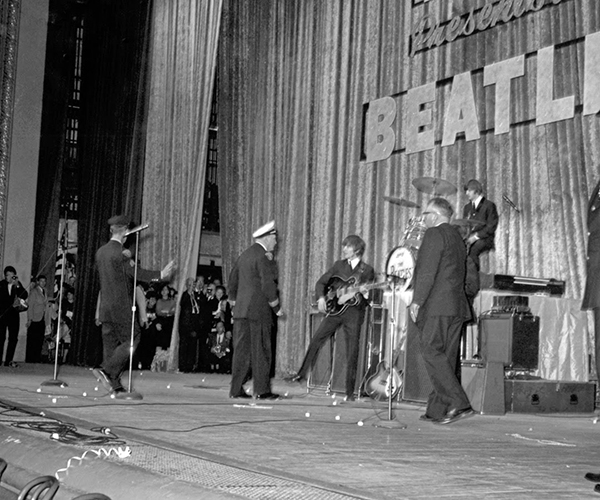Here’s a tip: If you visit Euclid Avenue’s Huntington Bank, silence your cell phone. When the highrise was completed in 1924, the soaring three-story lobby was the largest banking lobby in the world (and remains among the largest even today). The building’s more than 30 acres of floor space was the second largest in the world at the time. With its huge columns, monumental scale and tons of marble, “echo” is an understatement.
— Kate Bigam
Better known for its annual holiday lighting display that stretches along Noble Road in East Cleveland, GE’s Nela Park (the nation’s first industrial park) also holds an expensive collection of original Norman Rockwell paintings. Most of the eight Rockwells in the collection are showcased in the highly secured Lighting Institute — a building that is used for customer education and closed to the public.
The paintings feature people playing or working by lamplight or other forms of light. GE commissioned Rockwell in the 1920s to do the illustrations for calendar and advertising art for its Edison Mazda light bulbs. The value of the paintings — now thought to be worth $200,000 to $500,000 each — wasn’t recognized until the 1960s, says Mary Beth Gotti, manager of the GE Lighting and Electrical Institute, at Nela Park.
“Over the years these paintings would hang in miscellaneous places around Nela Park, and when people retired they would just take them with them,” says Gotti, who adds that Rockwell may have originally given GE up to 19 paintings in the series. “In the ’60s, they started looking for the ones that people had taken. Some people returned them, but some of them had gotten sold or scattered all about the world.”
Perhaps an even bigger secret is the artwork locked away in GE’s hidden vault. The collection includes “The Torch Race” by N.C. Wyeth and a Maxfield Parrish original.
— Heide AungstOld Stone Church
When the Old Stone Church caught fire in 1884, the slow burn allowed clergy two days to rescue sacred artifacts, including the pew Abraham Lincoln’s family is reputed to have sat upon at his memorial service. Located in the church’s front row, the pew is engraved with Biblical scrolls that match carvings on the old pulpit furniture, leading people to believe the pew’s storied history.
John Carroll University's Labryinth
Tucked away in the Rodman Hall courtyard at John Carroll University, a labyrinth etched out of blue-gray and red brick cobblestones seems to lead nowhere. But the point of walking the labyrinth isn’t where you’re going; it’s to find a sense of peace in the journey. Modeled after a thirteenth-century design in the Notre Dame cathedral at Chartres, France, Cleveland’s 11-circuit version isn’t just a decorative path — walkers repeat a prayer or intention as they travel 850 feet through the tight twists to the center (where the seal of St. Ignatius symbolizes the university’s Jesuit connection). Hopefully, they find their answer along the way.
Entrance to Hart Condominiums
Sandwiched between Griffon Gallery and The Sunset Lounge on West Ninth Street, the Hart Building’s fourstory tin facade, constructed in 1868, is a mere 9 feet wide. The former alley is now the narrowest building in Cleveland.
Found Cathedral Latin Arch
On a typical weekday, people scurry through the lobby of the W.O. Walker Center at 10524 Euclid Ave. for medical appointments. Few notice the majestic stone arch that features ornate pillars and a sculpture of two angels flying above Mary and baby Jesus, across from the information desk on the first floor. Yet, this is about all that Cathedral Latin High School alumni have to remember their former school, which once stood here. (If this taste of nostalgia isn’t enough, though, many pieces of marble and granite from the school and the wood gym floor are part of the architecture at Primo Vino restaurant in Little Italy.)



